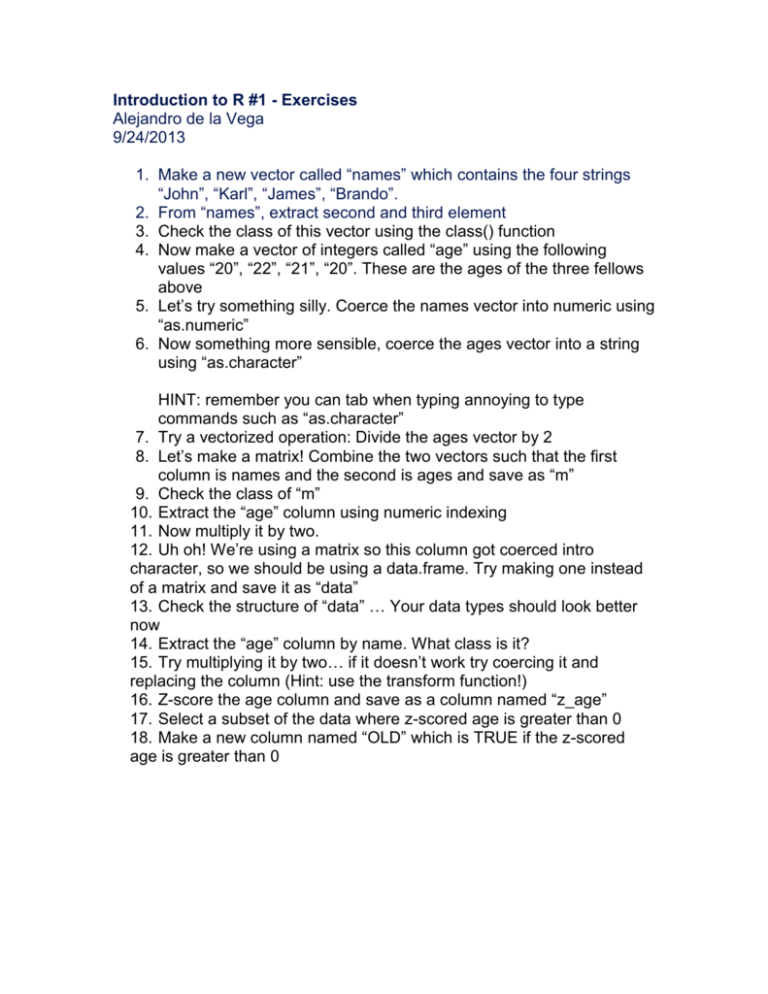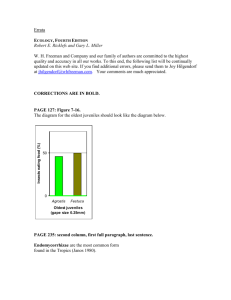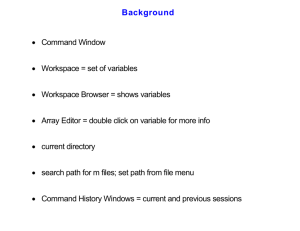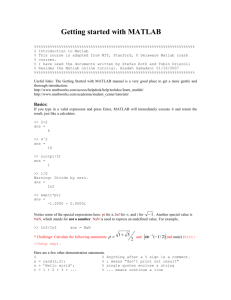Excercise
advertisement

Introduction to R #1 - Exercises Alejandro de la Vega 9/24/2013 1. Make a new vector called “names” which contains the four strings “John”, “Karl”, “James”, “Brando”. 2. From “names”, extract second and third element 3. Check the class of this vector using the class() function 4. Now make a vector of integers called “age” using the following values “20”, “22”, “21”, “20”. These are the ages of the three fellows above 5. Let’s try something silly. Coerce the names vector into numeric using “as.numeric” 6. Now something more sensible, coerce the ages vector into a string using “as.character” HINT: remember you can tab when typing annoying to type commands such as “as.character” 7. Try a vectorized operation: Divide the ages vector by 2 8. Let’s make a matrix! Combine the two vectors such that the first column is names and the second is ages and save as “m” 9. Check the class of “m” 10. Extract the “age” column using numeric indexing 11. Now multiply it by two. 12. Uh oh! We’re using a matrix so this column got coerced intro character, so we should be using a data.frame. Try making one instead of a matrix and save it as “data” 13. Check the structure of “data” … Your data types should look better now 14. Extract the “age” column by name. What class is it? 15. Try multiplying it by two… if it doesn’t work try coercing it and replacing the column (Hint: use the transform function!) 16. Z-score the age column and save as a column named “z_age” 17. Select a subset of the data where z-scored age is greater than 0 18. Make a new column named “OLD” which is TRUE if the z-scored age is greater than 0











